My Honest Review of the Trendy Hatch Restore 2 Sunrise Alarm Clock
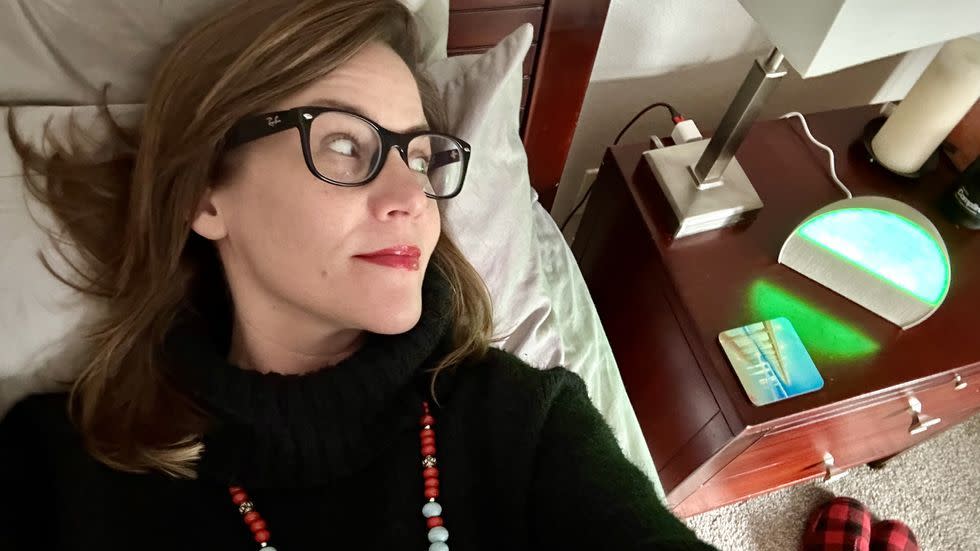
"Hearst Magazines and Yahoo may earn commission or revenue on some items through these links."
My husband and I are newlyweds, having married over the summer after blending our families last January. We're still working out the kinks in merging our respective sleep styles — and by “kinks” I mean massive ripples in the time-space continuum. I am not sure you could find two people with more different sleeping habits.
Here’s what it looks like: He falls asleep (and often starts snoring) about a minute after his head hits the pillow, while I struggle to turn off my brain. I typically end up spending half an hour or more doomscrolling on my phone — which, I know, experts say is the kiss of death for a good night’s sleep. Sometimes, if I really can’t sleep, I get up and do housework or tackle my to-do list for the next day.
Once I’m asleep, though, I. Am. Asleep. I am such a still sleeper that my husband often checks to make sure I’m still breathing. To get into this deep sleep state, I need absolute darkness, including closed blinds, an eye mask and a king-sized pillow over my head. On the flip side, my husband jumps out of bed at the smallest disturbance.
Come morning, if I don’t set two or three alarms I don’t reliably wake up before 8 a.m. Given that our youngest has to be at school by then, I often don’t get the minimum seven hours of sleep a day the CDC recommends for adults aged 18 to 60. As for my husband, he wakes up naturally — raring to go! — with the sunrise.
I do worry about the potential long-term toll of not getting enough sleep, an issue shared by a third of U.S. adults. There are serious health risks linked to sleep deficiency such as heart disease, kidney disease, high blood pressure, diabetes, stroke, obesity and depression, according to the National Heart, Lung and Blood Institute.
Of course there’s the now-trending option of a “sleep divorce” — when couples in otherwise healthy relationships opt to sleep in different beds or rooms (Cameron Diaz is a fan). I, for one, would like to continue sleeping with my wonderful new partner, however.
So, when my editor at Good Housekeeping asked me if I’d be willing to try out the best-selling Hatch Restore 2 alarm clock under real-world circumstances — considering all these factors — I thought, “Well, this should be interesting.”
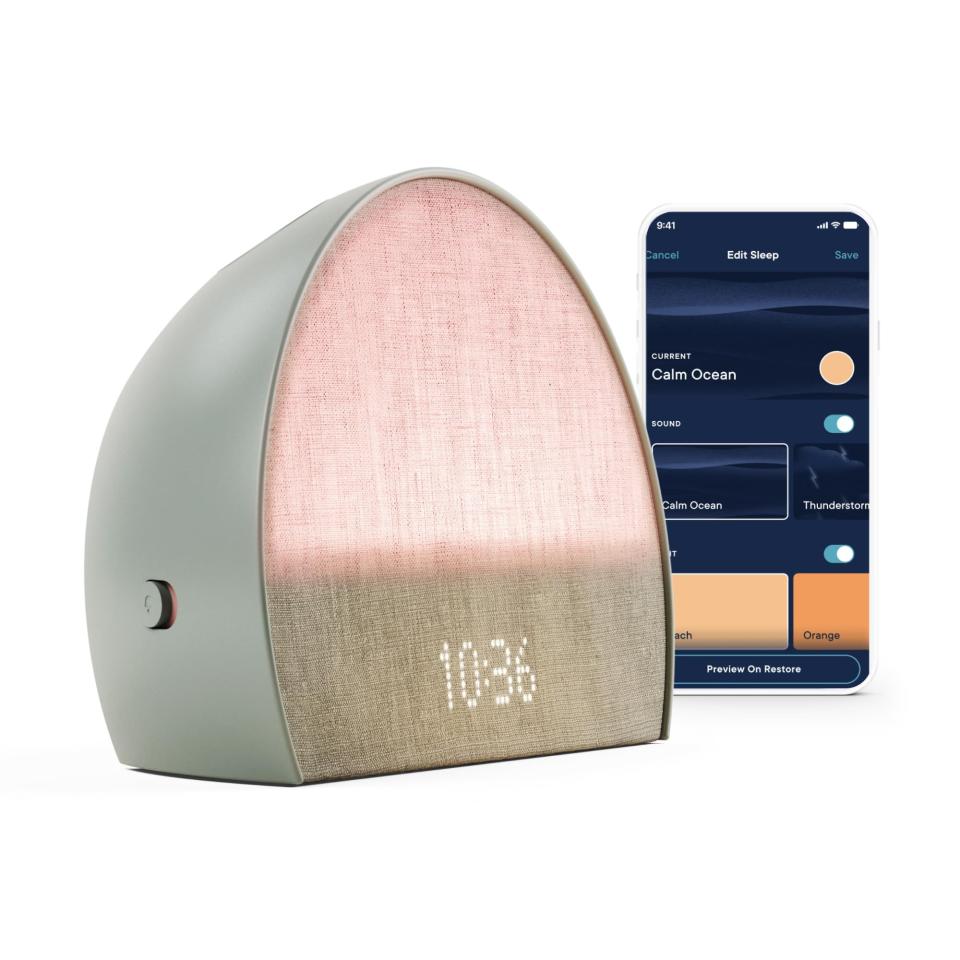
Restore 2 Sunrise Alarm Clock
amazon.com
$199.99
What is the Hatch Restore 2?
The Hatch Restore 2 is a combination smart alarm clock, noise machine and sunrise alarm clock designed to improve your sleep quality at night and provide a gentler wake-up in the morning.
It can be controlled on the device itself or via the free-to-download Hatch Sleep app. It's available in three muted neutral hues — Latte, Slate and Putty, the beige-ish one I chose — and features a stylish linen face with invisible touch sensors and a sleekly curved shape. In short, I think it's one of the best-looking alarm clocks I've ever seen.
The Restore 2 retails for $199.99, and that gets you the basic alarm clock functionality, sunrise simulation, adjustable light brightness and various nature sounds and “color” noises. There is an optional Hatch+ subscription ($4.99 a month or $49.99 a year) that you can try for free for the first 30 days to access its library of content and added features (more on that in a bit).
With or without a subscription, one of the device’s main points of differentiation is its noise options — including white noise, which incorporates all frequencies across the spectrum; pink noise, which has equal energy per octave and a smoother sound; green noise, which is similar to pink noise but emphasizes lower frequencies; and brown noise, which uses even lower frequencies and sounds deeper — as well as its Sunrise Alarm, which can be set to any one of dozens of hues, including warm white, red, aqua and lilac to name a few.
“I think people like to wake up gently,” Good Housekeeping Institute Test Engineer Alec Scherma told me. “The idea behind an alarm clock is to jolt you out of bed with a loud sound. Sunrise alarms, on the other hand, imitate the sunrise, which helps manage your circadian rhythm, or your body’s internal clock.”
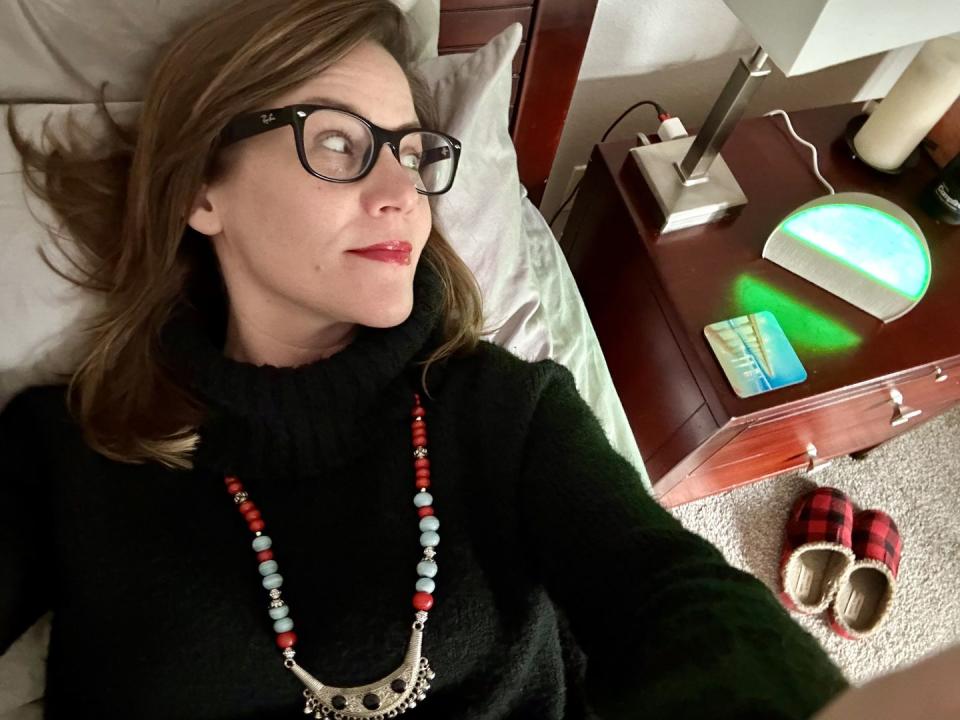
What are the Hatch Restore's subscription offerings?
If you opt for the subscription, you have an all-access pass to an ever-expanding library of guided meditations, relaxation exercises and other content, along with cool features such as sleep tracking, smart home integration and customizable sleep soundscapes and morning routines.
The newest content is Hatch's Wind Down Channels, offering audio groupings such as spoken Sleep Stories, relaxing music (e.g., “Melting Pop with So Wylie” and “Drowsy Piano”), Dreamscapes featuring field recordings from nature, Guided Rest options like an ASMR whisperer and more. One particularly eclectic snooze-inducer in the Pillow Talk channel is “i’ll scroll 4 u,” in which someone discusses stuff they’ve recently seen on socials.
After the light eases you into your day, if you subscribe to Hatch +, your Rise Routine continues with Morning Moments, which are several-minute-long motivational messages or meditations that the app suggests and you pre-select and put in whatever order you prefer. The short morning ritual I selected starts with a segment of simple breathing exercises (along with a recommended light green light) followed by a “rise and slay” pep talk from Jaida Essence Hall of RuPaul’s Drag Race fame (Essence of Purple).
My experience testing the Hatch Restore 2
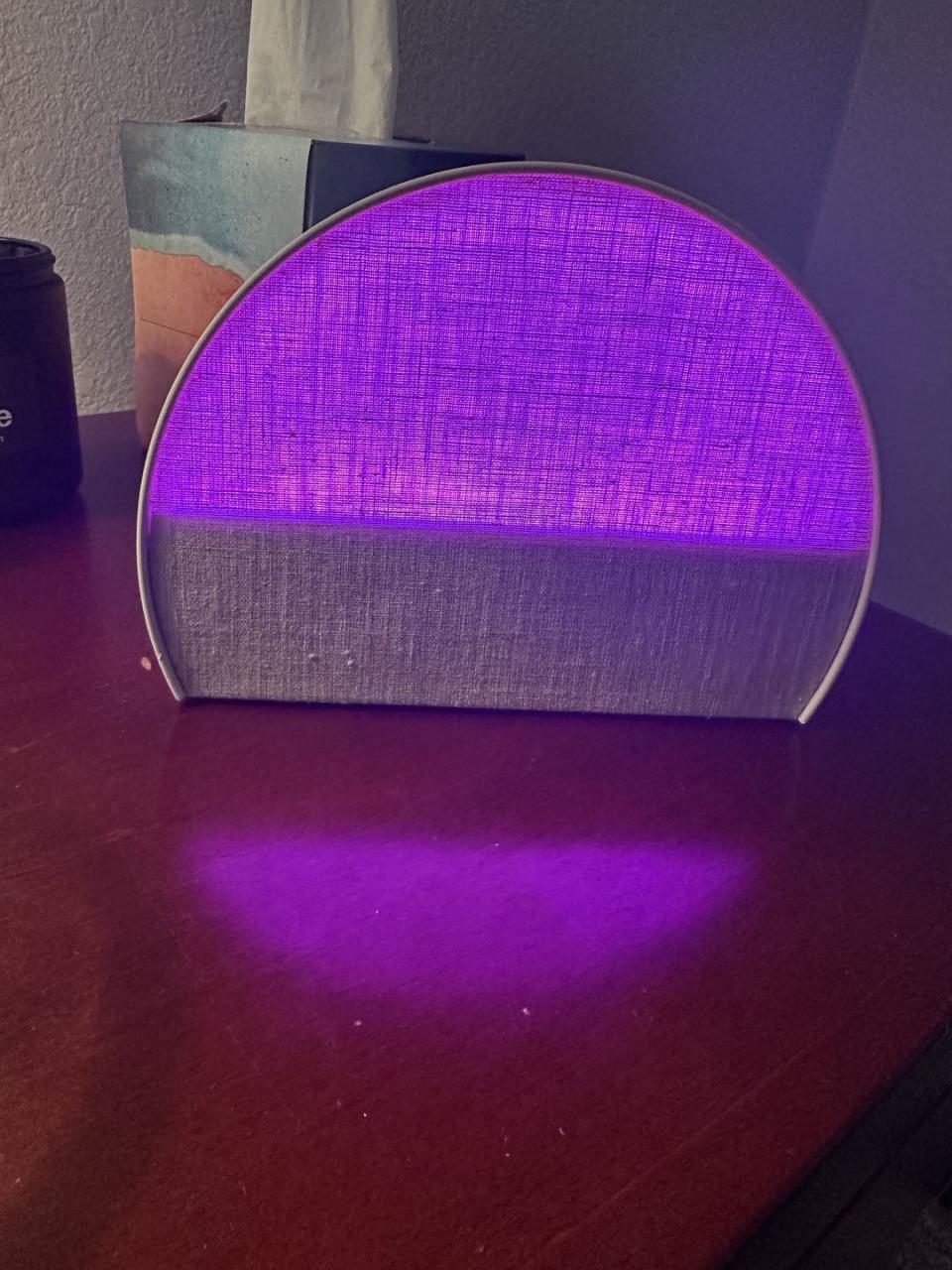
Set-up
I attempted to set up the Restore 2 the night the box arrived on my doorstep. Based on the concise, easy-to-understand manual, the process seemed straightforward: Download the app, create an account, turn on Bluetooth, plug in the device, wait for it to pair and voila! (I was determined to do it without any help from my husband, despite my attempts at simple setups usually turning into technological odysseys.)
Unfortunately, our Wi-Fi wasn’t cooperating, and the app’s cheery waiting message said, “This may take a little while. Time for a stretch break. You’re doing great!” I decided to go to sleep and try again the next day, when things went more smoothly. The app features a handy Help Center in Settings with troubleshooting tips for set-up and lots of other FAQs.
First, I designed my personalized Rest Routine, which began with a few questions about my habits to inform the process. I was deemed to be a Midnight Muse – someone who has “trouble quieting their thoughts before sleep.” True! My particular Rest Routine would use “calming sounds and guided meditations to help [me] relax and drift off.”
During setup, I was also prompted to decide on a nightly “Cue to Unwind,” which is when the machine comes to life with a slowly pulsating colored light and soothing ambient music signaling it’s time to move toward sleep. I shouted down the stairs to my husband to ask what time he thought we should schedule the cue. We agreed on 9:45 p.m., but, he added, “I don’t want to be told by an alarm clock when I’m supposed to go to bed.”
That’s the thing with the Restore 2, though — it’s all about creating evening and morning rituals. The very first message in the app told me so: “Over the next two weeks, you’ll build what we call a sleep toolkit – a.k.a. the habits, routines, cues and knowledge you need to sleep well and wake up rested.” I shared this with my husband in bed that night. He was still not enthusiastic, but the National Sleep Foundation agrees with Hatch on this sleep tip: “Go to sleep and wake up at the same time every day, including weekends. It’s important for your body to have a regular sleeping schedule.”
That said, the Restore 2 does allow for some flexibility. For instance, you can set up your Rest and Rise routines to start and stop at different times depending on the day of the week. In my case, I only set them for Monday through Friday, since those are my most difficult days to get those precious seven hours a night – and take the weekend off. As the app explained in one of my daily inbox messages, “Your body isn’t a machine, and that’s very much OK. Your sleep patterns and needs are always shifting, and the key is learning to sense those shifts and adjust.” It suggested checking in every two weeks to tweak your routines if needed.
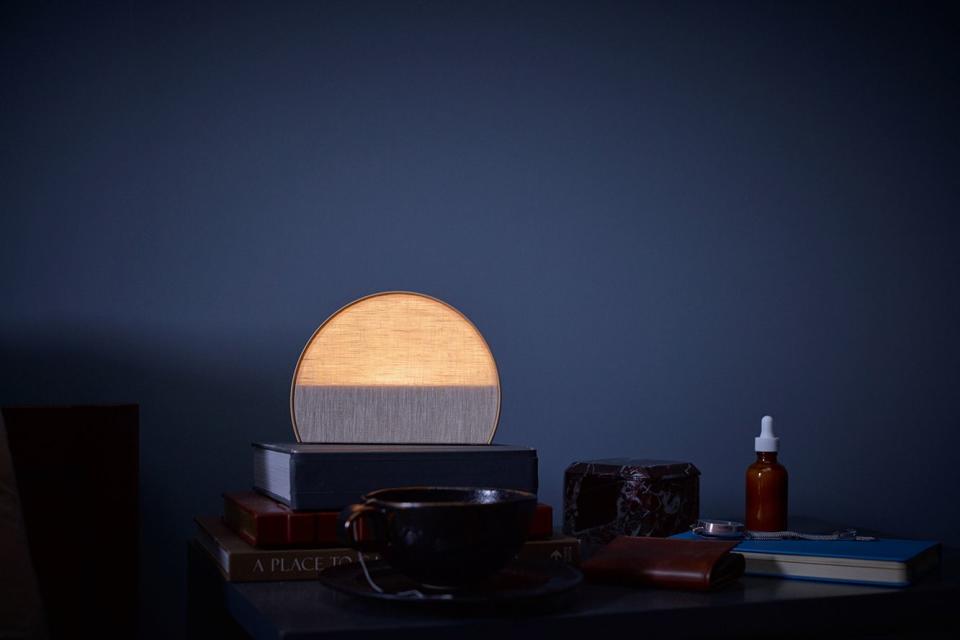
Using it at night
On the first night, I fumbled with the Restore 2’s minimalist design because I kept touching the nearly invisible spots on the alarm’s face to adjust the brightness and volume up or down. I’m sure this was harder because of my sleep mask and the pillow over my head.
I also didn’t love that you can’t skip through the different stages of your routine if you’re ready for the next part. Instead, you have to push the concave winking-eye button on the top left (Rest Routine) or the convex open-eye button on the top right (Rise Routine) multiple times if you want to jump from, say, your Sunrise Alarm to any non-sequential Morning Moments. Accidentally pass your desired content? You have to push the button that many times to get back there again. Blergh.
(Technically, you can do all these things through the app. But turning on your phone and shining some blue light right into your face while you’re trying to fall asleep felt counterproductive to me. I speak from years of experience.)
In the “pros” column, my husband and I discovered more common ground in our sleep preferences than we anticipated. After experimenting with all the different “color” noises for our de facto shared Rest Routine, we both found that brown noise was the most calming (he describes it as a thunderstorm; I think waterfall). The background buzz helped mask the sound of his snoring while I was trying to fall asleep, yet it was soft and subtle enough that it didn’t disturb his sleep either. Double win!
By the end of week one, I was appreciating the nightly Cue to Unwind, too, even if its glowing light and sound emanating from the nightstand still catch me off guard sometimes — we’ve started referring to it as the Alien Thing. Without it, I tend to lose track of time, whether it's because I want to fold that last load of laundry or try a new sheet mask before bed or because my husband is feeling extra chatty. Now when the Alien Thing tells me it’s time to bed, I listen to it.
As for the other Rest Routine content, I’ve been trying out different options, from a 17-minute “History from A to Zonked” (in which a history-loving Australian comedian shares arcane trivia) to a 15-minute “Experience ASMR” (which starts with a woman softly saying, “Hello. Welcome to the Whispering Waters Salon” before playing the sound of gently running water). So far, the spoken snippets haven’t woken up my husband, and they give my mind something to focus on other than what’s happening on my small blue-light rectangle.
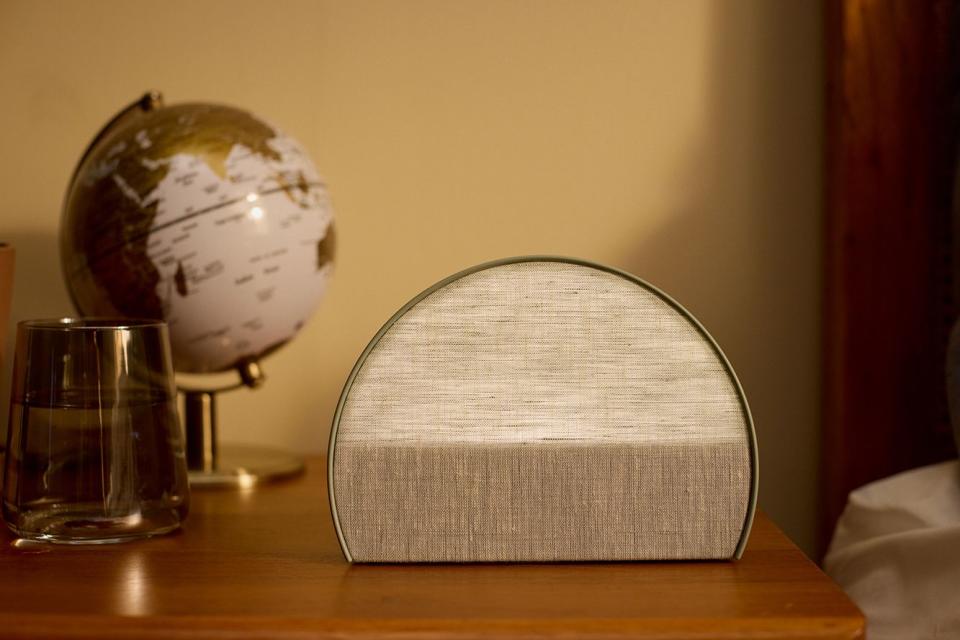
What the morning brought
The first wake-up came way too early because I accidentally scheduled a sleep sound and light to come on in the middle of the night. In my defense, I didn’t find the Help Center right away, which might have prevented the user error. Likewise, the app’s daily message tutorials don’t explain the benefits of using different light colors or recommend volume levels until several days in. (Turns out, you should start with the volume at level 30 – mine were set to 60.)
“There was a very bright orange light and loud white noise on when I woke up at 3 a.m. It kept me up until 5 a.m. because I didn’t know how to turn it off and didn’t want to reach over you,” my poor husband told me. “Then, it went dark and quiet. At 6 a.m., some wake-up thing with soft light and music came on.” The latter was the actual Sunrise Alarm. I felt bad because I slept through the commotion. Bless him for not waking me up.
Of course I understand the intention of the Sunrise Alarm, but for someone like me, who must block out all light while sleeping, it’s pretty much wasted. As for my morning-person husband, “I think it would be a nice way to wake up if I wasn’t already awake.”
Once I was up, I enjoyed trying out the Recommended Light Pairings for the various sound content and learning about which light colors are best for which parts of each routine (e.g., “Unwind with warm tones like red, orange, and peachy hues … sunset colors are just the thing to relax your mind.”)
Unfortunately, the Morning Moments haven’t been particularly life-altering for either of us. Once my husband is up, he’s up — and not the type to linger in bed and listen to “Harp Classics” or “Sunrise Jazz Piano.” Sometimes he gets back into bed when my alarm goes off, but soon it's the morning rush to get the kids to school. And we need our coffee to handle the morning rush, so there's no much time to live in the Morning Moment.
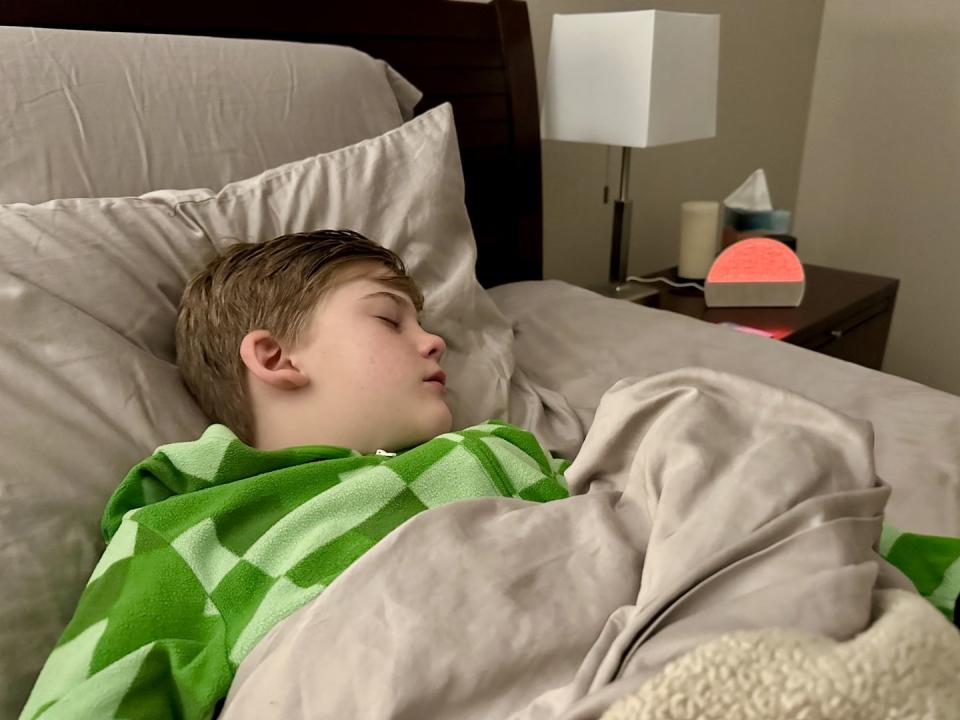
As an experiment, we moved the device to our youngest son’s room for a night. He asked to try it (it looks pretty cool!) and he sometimes has difficulty falling asleep. We set up his personal Rest Routine to include a 7 p.m. Cue to Unwind, followed by a 40-minute story from the “Signal Falls” series about supernatural activities in a small town and ending with a “Calming Singing Bowls” sound effect.
Unfortunately, it didn't help him – he reported staring at the lights like a firefly instead. We're going to give it another chance without the lights at night, though.
The bottom line: Is the Hatch Restore 2 worth it?
Anyone who has read this far can probably see what’s coming: I can definitively say the Restore 2 is not ideal for couples with opposite sleep styles like ours.
But during my single years in various cities, I could imagine it being quite useful, especially how the Rest Routine seamlessly transitions through the nightly content without me having to fiddle with my phone (like when I have used meditation apps). Also, in urban places where light and noise pollution are more of a concern, cultivating a healthy sleep environment takes more effort, and the Restore 2 might help you.
Hatch emphasizes that good sleep starts with intentional habits, which I've come to value more now that I've settled into a sort of evening rhythm, regardless of whether I use all the features. I have also been feeling more rested, though I'm not sure if it's because I'm less inclined to reach for my phone when in bed or if the brown noise is working its magic. My favorite thing? My husband and I unexpectedly bonded over the Restore 2’s quirks and user mishaps, and we'll have some funny stories to tell in the future. For that reason alone, we enjoyed using the Hatch Restore 2.
You Might Also Like

